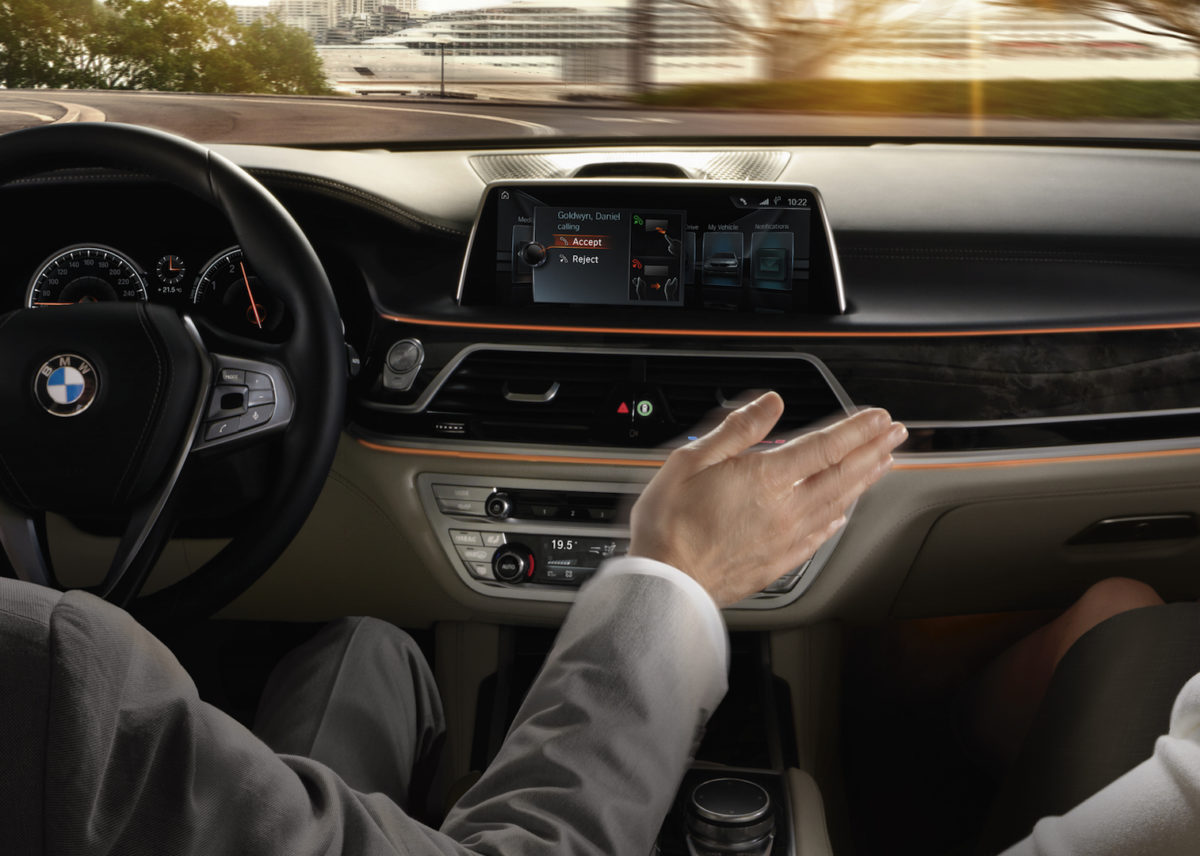How BMW Gesture Control Works


A user rejects an incoming call with the wave of a hand.
To the casual onlooker you might appear to be twirling your hand around for no apparent reason, but this is actually a new way to interact with the advanced infotainment systems in BMW vehicles like the 2019 X5, 2019 7 Series the first ever 2020 X7.
Called Gesture Control, pointing at the central display can accept an incoming phone call, for example. Here’s how it works.
Hardware
A minuscule camera mounted above the gear lever recognizes specific hand movements and tells the computer to perform the appropriate action. Over-the-air updates allow the feature to stay current and add new functionality when available.

Commands
As mentioned earlier, users can take a call by pointing a digit at the screen, or dismiss by swiping — pointing two executes a navigation command or programmable custom setting. Twirling an index finger clockwise raises the stereo volume, while a clockwise motion lowers it. When backing up, creating a circle with the thumb and forefinger changes the viewing angle.
Pros and cons
Although Gesture Control is a great way to get more done behind the wheel without taking too much attention off the road, there is a bit of a learning curve to master things like getting the volume to an exact level. Fortunately, however, BMW has not eliminated traditional forms of input.

Alternatives
The iDrive Controller is still present on the centre console and may be used to navigate menus via rotating or pushing down on the knob, or drawing letters on its touch sensitive surface. The physical buttons on the steering wheel, as well as voice recognition, remain other options.
Take a look at the models offering Gesture Control at the BMW Store and BMW Langley.

